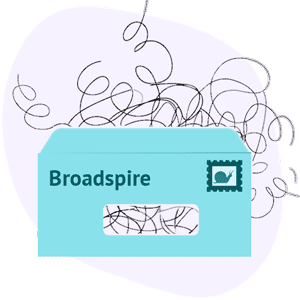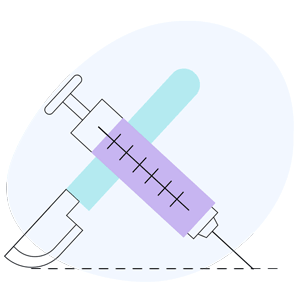How to e-Bill: 835 Electronic EORs

California law mandates that when a provider bills electronically for workers’ comp services, the claims administrator must timely send the provider an electronic Explanation of Review (EOR), in X12 835 EDI format.
These electronic EORs eliminate the provider’s administrative burden of posting payment information from paper EORs, because billing software can automatically post the reimbursement amounts reported in the electronic EOR to the appropriate e-bill.
These electronic EORs, or ‘835s’ (for short) are crucial for providers to track whether the practice receives timely and proper reimbursement. Once an electronic EOR automatically posts to an e-bill, the posting closes the payment loop on that e-bill.
Below, we outline electronic EOR (835) requirements in California, and explore how 835s make managing practice revenue much, much easier.
CA 835 Requirements and Time Frames
Electronic EORs (835s) contain information that would normally populate a non-electronic paper EOR. Below is an example of EOR data in 835 format:
California law mandates claims administrators reimburse providers who send e-bills within 15 working days of receipt of the e-bill. Further, California law mandates that the claims administrator send the provider an electronic EOR (835) that adheres to Division of Workers’ Compensation (DWC) Medical Billing and Payment Guide Appendix B.
According to the Guide, upon receipt of the provider’s e-bill for medical treatment, the claims administrator must:
- Return a ‘277’ electronic receipt, either acknowledging the claims administrator accepted the e-bill or rejecting the e-bill as incomplete, within 2 business days
- For an accepted e-bill, return the 835 electronic EOR (along with payment) within 15 business days of the date of receipt of the bill
(By comparison, claims administrators must remit payment and EORs for non-electronic bills in 45 days and in 60 days for government employers).
The 15-day 835 deadline applies regardless of whether the claims administrator denied or adjusted payment. As Section 7.1(b) of the Guide specifies, the 835…
…serves as the Explanation of Review, and notice of denial or objection. Uncontested portions of the bill must be paid within 15 working days of receipt of the bill. [emphasis added]
The 15-day 835 deadline is further reinforced by California Labor Code Section 4603.4, which states:
Payment for medical treatment…shall be made with an explanation of review by the employer within 15 working days after electronic receipt of an itemized electronic billing…[emphasis added]
Bottom line: when a practice bills electronically, within 2 business days the provider knows when the 835 and payment are due from the claims administrator (based on the 277 electronic receipt). And within 15 business days of the e-bill’s receipt date, the provider knows:
- If the claims administrator paid timely, or if penalty and interest payments are due
- If the claims administrator paid in full, or if a Second Review appeal is necessary to dispute any denials or adjustments
835s and Second Review Appeals
When the provider bills electronically, the provider must also submit any necessary Second Review appeals electronically. Just as with the original e-bill, the claims administrator must respond to the electronic Second Review appeal with a final electronic EOR, in 835 format.
According to the DWC Guide, claims administrators must return the final EOR in 835 format within 14 days of receiving the Second Review appeal. However, the claims administrator has 21 days to remit any additional payment owed as a result of the Second Review appeal:
Where an electronic bill is submitted as a Request for Second Review…The claims administrator must respond the Request for Second Review within 14 days of receiving the request by issuing a final written determination on the bill…The claims administrator shall issue the ASC X12/005010X221A1 Payment/Advice (835) as its explanation of review…Payment of any balance not in dispute shall be made within 21 days of receipt of the Request for Second Review… [emphasis added]
Bottom line: When a practice submits a Second Review appeal electronically, within 14 days the provider knows:
- If the claims administrator responded timely, or if an Audit Complaint is warranted
- If the claims administrator reimbursed correctly, or if a request for Independent Bill Review (IBR) is warranted
Timely 835s: Roles and Responsibilities
The majority of workers’ comp claims administrators (insurers, third-party administrators (TPAs), and self-insured employers) lack the technology to generate 835s and remit the 835s to providers. For that reason, claims administrators employ clearinghouses. These specialized vendors:
- Accept the provider’s e-bill on the claims administrator’s behalf
- Return the electronic 277 “receipt” for the e-bill to the provider
- Translate the e-bill into a format the claims administrator can process
- Generate the electronic EOR in 835 format, and send the 835 to the provider
Delays in e-bill processing and payment may originate in any one of the claims administrator’s vendors, be it the clearinghouse, bill review service, or the software companies serving the clearinghouse or bill review service.
Regardless, by California law it is the claims administrator’s sole responsibility to timely return 835s in response to provider e-bills.
Our Claims Administrator Directory provides detailed data on all 593 claims administrators billed by daisyBill provider clients — including statistics on each claims administrator’s compliance in timely returning 835s.
In future articles, we’ll explore the 835 compliance data available on the Claims Administrator DIrectory in further detail. Stay tuned!
Empower your practice. Make workers’ comp authorization, billing, and appeals easier, faster, and better with daisyBill. Reach out and see how we can help.
CONTACT DAISYBILL
DaisyBill provides content as an insightful service to its readers and clients. It does not offer legal advice and cannot guarantee the accuracy or suitability of its content for a particular purpose.







.png)
.gif)